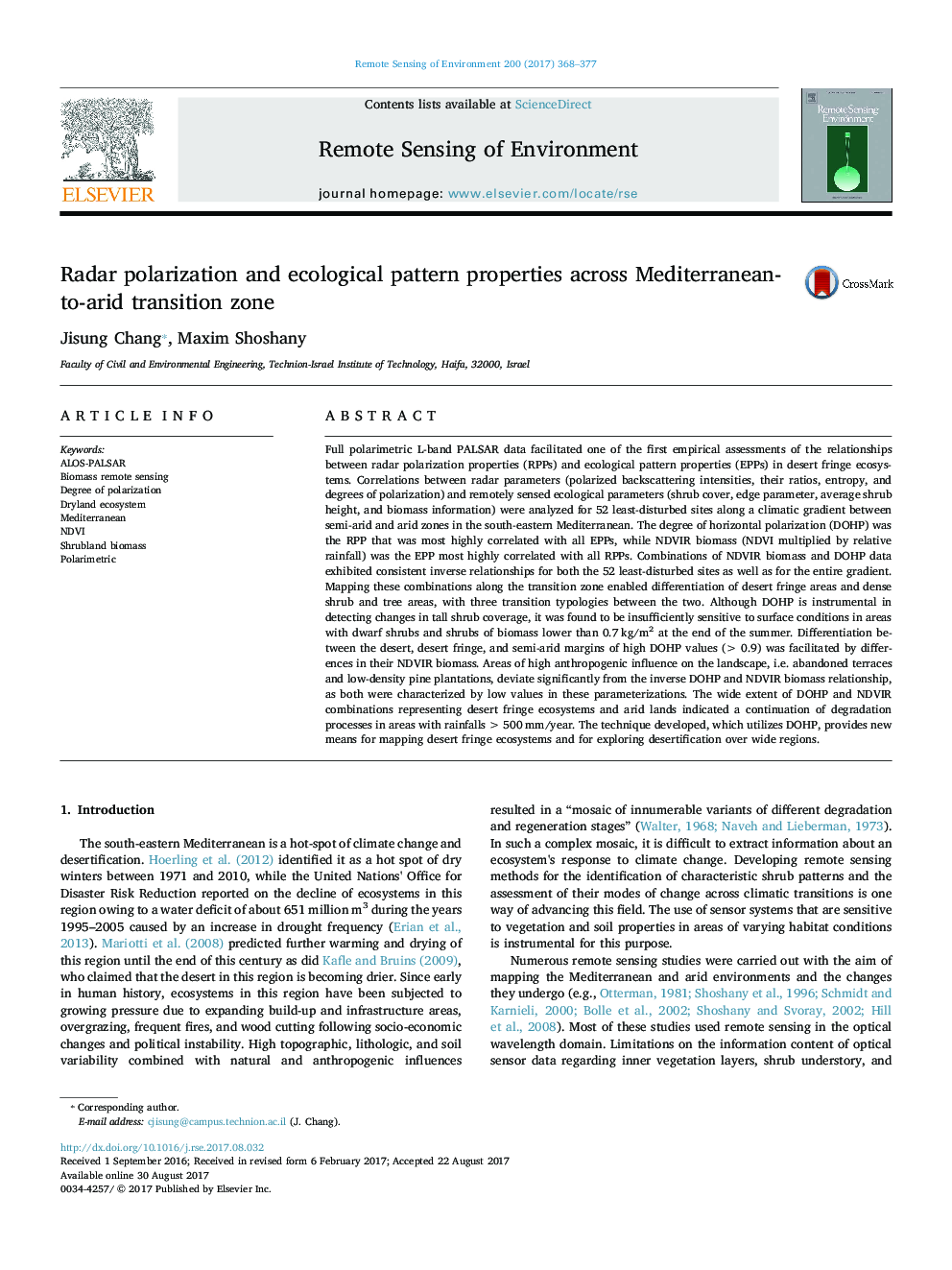| Article ID | Journal | Published Year | Pages | File Type |
|---|---|---|---|---|
| 5754742 | Remote Sensing of Environment | 2017 | 10 Pages |
Abstract
Full polarimetric L-band PALSAR data facilitated one of the first empirical assessments of the relationships between radar polarization properties (RPPs) and ecological pattern properties (EPPs) in desert fringe ecosystems. Correlations between radar parameters (polarized backscattering intensities, their ratios, entropy, and degrees of polarization) and remotely sensed ecological parameters (shrub cover, edge parameter, average shrub height, and biomass information) were analyzed for 52 least-disturbed sites along a climatic gradient between semi-arid and arid zones in the south-eastern Mediterranean. The degree of horizontal polarization (DOHP) was the RPP that was most highly correlated with all EPPs, while NDVIR biomass (NDVI multiplied by relative rainfall) was the EPP most highly correlated with all RPPs. Combinations of NDVIR biomass and DOHP data exhibited consistent inverse relationships for both the 52 least-disturbed sites as well as for the entire gradient. Mapping these combinations along the transition zone enabled differentiation of desert fringe areas and dense shrub and tree areas, with three transition typologies between the two. Although DOHP is instrumental in detecting changes in tall shrub coverage, it was found to be insufficiently sensitive to surface conditions in areas with dwarf shrubs and shrubs of biomass lower than 0.7Â kg/m2 at the end of the summer. Differentiation between the desert, desert fringe, and semi-arid margins of high DOHP values (>Â 0.9) was facilitated by differences in their NDVIR biomass. Areas of high anthropogenic influence on the landscape, i.e. abandoned terraces and low-density pine plantations, deviate significantly from the inverse DOHP and NDVIR biomass relationship, as both were characterized by low values in these parameterizations. The wide extent of DOHP and NDVIR combinations representing desert fringe ecosystems and arid lands indicated a continuation of degradation processes in areas with rainfalls >Â 500Â mm/year. The technique developed, which utilizes DOHP, provides new means for mapping desert fringe ecosystems and for exploring desertification over wide regions.
Related Topics
Physical Sciences and Engineering
Earth and Planetary Sciences
Computers in Earth Sciences
Authors
Jisung Chang, Maxim Shoshany,
